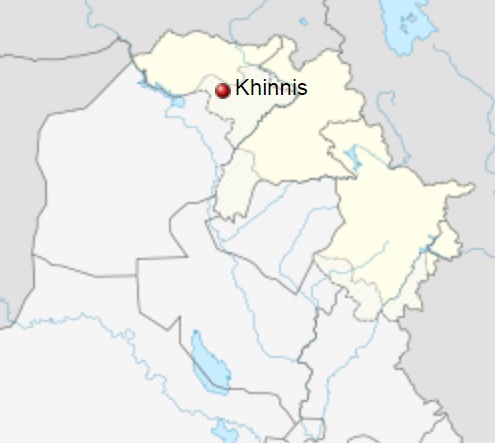
| KHINNIS RELIEFS
Khinnis (Iraqi Kurdistan)
Khinnis Reliefs Location : Duhok Governorate, Iraq
Region : Kurdistan Region
History :
Builder : Sennacherib
Founded : Around 690 BCE
Cultures : Neo-Assyrian Empire
Management : Directorate of Antiquities of Dohuk
Khinnis is an Assyrian archaeological site (also known as Bavian, its neighbouring village) in Duhok Governorate in the Kurdistan Region of Iraq. It is notable for its rock reliefs, built by king Sennacherib around 690 BC.
Reliefs of Bavian (after Layard) as included in J.H.Wright's 1905 book of universal history During the reign of Sennacherib (705–681 BC), Khinnis was built in order to "celebrate the construction of a complex system of canals whose aim was to supply the capital of the empire, Nineveh, and its hinterland with water", according to the World Monuments Fund. The reliefs face the River Gomel Su, and an inscription records the construction of a hydraulic system built by Sennacherib. The construction of the monument therefore had a propagandistic purpose for the Assyrian king.
Austin Henry Layard was the first Western scholar to describe the site in 1853. Layard stated that Khinnis had been discovered by Simon Rouet, the French consul in Mosul.
The rock reliefs and tombs at Khinnis are noted by the Duhok Governorate's website to be "the finest ancient rock carvings in the Badinan Region". According to Langendorfer (2012), the site's Great Relief is "the largest single Assyrian sculpture in existence, which depicts a pair of gods attended by the duplicated figure of the Assyrian king".
Langendorfer notes that in the site's inscriptions, "Sennacherib emphasizes his ingenious technical ability to manipulate water for the benefit of the Assyrian state, either through the creative irrigation of the Assyrian heartland and the new capital, or the destructive flooding and leveling of Babylon".
The Directorate of Antiquities of Dohuk is in charge of the site, and the Land of Nineveh Archaeological Project of the University of Udine has been recording the rock reliefs with a laser scanner.
Source :
https://en.wikipedia.org/ |

,_photographed_in_2019.jpg)
_(14779836604).jpg)